Jingdezhen Ceramics University is the only multidisciplinary university named after ceramics in the country. It is one of the first 31 independently established undergraduate art colleges in the country and one of the 94 colleges and universities qualified to recruit international students in China with Chinese government scholarships. The Ministry of Education’s Outstanding Engineer Education and Training Program, the Ministry of Education’s Demonstration University for Deepening Innovation and Entrepreneurship Education Reform, the Ministry of Culture and Tourism’s China Intangible Cultural Heritage Inheritance Group Study and Training Program, the first batch of participating universities, the National Innovation and Entrepreneurship Typical Experience Universities and the first batch of transformation The development of pilot colleges has now developed into an important base for ceramic talent training, ceramic science and technology innovation, and ceramic culture and art exchanges across the country and even the world. The school is located in Jingdezhen City, Jiangxi Province, one of the first batch of national historical and cultural cities. It currently has Xianghu Campus, Xinchang Campus, China Light Industry Ceramics Research Institute, and Ancient Ceramics Research Center. It covers an area of 1,970 acres and the school building area is 758,000 square meters. , including the School of Materials Science and Engineering, School of Fine Arts, School of Design Art, School of Mechanical and Electronic Engineering, School of Management and Economics, School of Information Engineering, School of Foreign Languages, School of Archeology and Museology, Department of Physical Education and Military Teaching, Department of Law, School of Marxism, There are 12 teaching colleges (departments and departments) including the College of Science and Technology and Arts, as well as the Graduate School, the School of Entrepreneurship, the School of Continuing Education and the International School, with 2 full-time students.There are more than 20,000 people, including more than 2,400 master's and doctoral candidates. Historical evolution: The school originated from the Chinese Ceramics School (sited in Poyang, Jiangxi) founded in 1910 by Zhang Jian, a modern Chinese industrialist and educator, and others. In 1912, it was renamed Jiangxi Provincial Raozhou Ceramics School. In 1915, it was renamed Jiangxi Provincial Second Class A Industrial School, and a branch branch was established in Jingdezhen in 1916. In 1925, it was renamed Jiangxi Provincial Ceramics School. In 1927, it was renamed Jiangxi Provincial Ceramics School. In 1934, it moved to Jiujiang, Jiangxi Province and changed its name to Jiangxi Provincial Jiujiang Ceramics Vocational School. Later, it moved to Jing'an, Jiangxi (1937), Pingxiang, Jiangxi (1938), Jingdezhen, Jiangxi (1944) and other places to run schools. In 1948, it was upgraded to Jiangxi Provincial Ceramics College, becoming the first ceramics higher education institution in China. In 1952, during the nationwide adjustment of colleges and universities, Jiangxi Provincial Ceramics College was abolished. Jingdezhen Ceramics Experimental Research Institute (now known as China Light Industry Ceramics Research Institute) was established on the basis of the original school site, equipment and some professional teachers. In 1958, with the approval of the Jiangxi Provincial People's Committee, Jingdezhen Ceramics College, an undergraduate institution, was established on the basis of the silicate majors of Jingdezhen Ceramic Art School, Jingdezhen Ceramic Workers Technical School, and Jiangxi Industrial Technical School, which opened a new chapter in the history of Chinese ceramic higher education. A new page. In 1975, with the approval of the State Council, it became a university directly under the former Ministry of Light Industry. In 1998, it was transferred to a joint construction between the central and local governments, with Jiangxi Province as the main management. In 1999, the China Light Industry Ceramics Research Institute was merged into the school. In 1984, it was approved to become a master's degree-granting unit. In 2013, it was approved to become a doctorate-granting unit. In 2016, it was renamed Jingdezhen Ceramics University. In the practice of running a school, the school has changed its name nine times, moved its campus four times, and been interrupted four times. It has gone through hardships and displacements, but its original intention remains unchanged, its blood is connected, its cultural heritage is connected, and its songs are endless. It has always been rooted in the ceramic industry. Fertile soil, through the hard work of generations of Tao masters, has formed its own fine traditions and unique spiritual and cultural characters, namely: "cultivate talents who understand academic principles and improve skills to improve the ceramic industry", and "cultivate ceramics professionals". The talent training goal of "being a pioneer in professional services", the talent training concept of "using both brains and hands, integrating science and art, and specializing in in-depth research", the school motto of "honesty, simplicity and perseverance", the school spirit of "knowing what one knows and doing what one does" and "carrying forward the quintessence of the Chinese nation and benefiting the people" country” spirit. Discipline majors: The school pays equal attention to art and engineering, and the integration of art, industry and commerce, highlights the advantages of "design art and ceramic engineering", and builds three major advantageous and characteristic disciplines: "art design and ceramic culture, ceramic material engineering and intelligent manufacturing, and ceramic economics and management" group. The school has 3 first-level discipline doctoral programs such as "Design", "Materials Science and Engineering" and "History of Science and Technology", 13 first-level discipline master's programs such as "Management Science and Engineering" and "Mechanical Engineering" and "Cultural Relics". There are 11 professional master's degree programs including "Translation". Among them, the "Ceramic Design and Art" discipline is the province's "14th Five-Year Plan" peak advantageous discipline, and the "Materials Science and Engineering" discipline is the province's "14th Five-Year Plan" potential development discipline. In recent years, the school's discipline construction has been improved in quality and upgrading. Design has been promoted to the first phalanx in the country, and art, materials science and engineering are among the advanced ranks. The material science discipline ranks among the top 1% of ESI global rankings. The school currently has 54 undergraduate enrollment majors, covering 9 disciplines such as engineering, art, education, management, economics, literature, science, history, and law, and carefully cultivates all aspects of ceramic materials, design, manufacturing, and management. Senior professionals in the industry chain, including 13 national-level first-class undergraduate major construction sites, 21 provincial-level first-class undergraduate major construction sites, and 3 majors that have passed the China Engineering Education Professional Certification. Teaching staff: The school follows the professional characteristics and development patterns of university teachers and has created a high-quality professional teaching team with noble ethics, superb professional skills, reasonable structure and full of vitality. It has brought together a group of ceramic artists and sculptors who are renowned at home and abroad. and ceramic engineering experts and scholars. There are currently more than 1,000 full-time teachers and more than 500 people with associate senior professional titles or above, including 5 winners of the National Outstanding Youth Fund, 1 young and middle-aged expert with outstanding national contributions, and 3 national candidates for the "New Century Hundreds and Thousands of Talents Project" people, 1 member of the Discipline Evaluation Group of the Academic Degree Committee of the State Council (Design), 3 candidates for the Ministry of Education’s “New Century Excellent Talent Support Plan”, 20 experts enjoying special government allowances from the State Council, Chinese Arts and Crafts Masters, Chinese Ceramic Art Masters, China There are 21 ceramic design art masters, 2 members of the Teaching Steering Committee of the Ministry of Education, as well as candidates for the "Ganpo Talents 555 Project", candidates for the provincial "Double Thousand Plan", "Jinggang Scholars" distinguished professors, provincial outstanding contribution talents, provincial millionaires There are more than 200 high-level talents at or above the provincial level, including talent project candidates, provincial cultural celebrities, and provincial "four batches" talents in the field of propaganda, ideology and culture. Education and teaching: The school takes it as its mission to serve the national ceramic culture inheritance and innovation strategy, lead the development of national ceramic science and education, and help build a strong province in education. It scientifically adjusts and optimizes the professional layout, vigorously promotes education and teaching reform, and forms a complete "bachelor-master-doctoral" program. The talent training system has been hailed by the Ministry of Education’s undergraduate teaching review and evaluation expert group as “a university that can play a leading and exemplary role in industry universities across the country.” The school has 2 postdoctoral research mobile stations and 1 postdoctoral research workstation. It has been approved as a national experimental teaching demonstration center, a national talent training model innovation pilot zone, a national engineering practice education center, a national continuing education base for professional and technical personnel, and a national A national-level entrepreneurial incubation demonstration base, a national-level practical education base for college students, and a training base for Chinese intangible cultural heritage inheritance groups. In recent years, it has been selected into the third batch of "National Colleges and Universities Huang Danian-style Teacher Team" and has been approved for national first-class undergraduate courses, national high-quality video open courses, national high-quality teaching materials, national planning teaching materials, and provincial key modern industrial colleges, provincial level High-level undergraduate teaching team, etc. It won 4 second-class national teaching achievement awards (one of which was for participation) and 5 first-class provincial teaching achievement awards, which fully demonstrated the school's educational and teaching achievements and talent training characteristics. Talent training: The school adheres to the principle of cultivating people with moral integrity, adheres to educating people for the party and educating talents for the country, constantly strengthens the educational concept of "student-centered, output-oriented, continuous improvement", and strives to build a distinctive and high-level talent training system . In recent years, students have repeatedly achieved great results in various extracurricular scientific and technological innovation competitions, and have won more than 600 national and provincial awards, including: 2 gold medals and 5 silver medals in the national finals of the China International College Student Innovation Competition. 14 bronze awards and the Best Creative Award, Advanced Group Award and Best Popularity Award; the "Red Day Reading" results won the "Challenge Cup" National College Student Extracurricular Academic Science and Technology Works Competition "Red Special" activity special award (25 nationwide, 2 in Jiangxi item) and the "most affecting" works. The school has comprehensively deepened the reform of the talent training model and formed a talent training model of "three-in-one" of creativity, innovation and entrepreneurship, and "five-in-one" of academics, majors, employment, career and entrepreneurship. The self-employment rate of graduates has ranked first for many years. It ranks among the top universities in the province, and its employment and entrepreneurship cases were selected into the 100 typical cases of employment and entrepreneurship for general college graduates across the country announced by the Ministry of Education (the only one in Jiangxi Province). Half of the school graduates are related to ceramic majors, more than 35% choose to find employment and start a business in the province, and about 30% choose to find a job and start a business in the ceramics industry, providing strong talent support to promote local economic and social development and the development of the ceramics industry. . Scientific research: The school has long been committed to innovative research on ceramic materials, production processes, and equipment technology. It has national-level scientific and technological innovations such as the National Engineering Technology Research Center for Daily Use and Architectural Ceramics (the first in Jiangxi Province) and the National and Local Joint Engineering Research Center for New Ceramic Materials. There are 2 platforms, 34 provincial and ministerial science and technology innovation platforms such as the China Ceramic Intellectual Property Information Center, and a number of national-level professional associations and institutions such as the Ceramics Branch of the Chinese Ceramic Society and the National Daily Ceramics Standards Committee are resident in the school, forming a A complete scientific and technological support system that provides all-round services and leads the development of the ceramic industry. In recent years, we have focused on key technologies and common technologies in the fields of traditional ceramics and high-tech ceramics industries, creating a number of new technologies and new achievements with independent intellectual property rights, and have successively won the first prize of Jiangxi Province Science and Technology Progress Award, Jiangxi Province Natural Science Award 2 second prizes in science. The national Chinese core journals "Chinese Ceramics", "Journal of Ceramics" and "Chinese Ceramics Industry" sponsored by the school are well-known in the ceramic industry at home and abroad. Social services: Based on serving local economic and social development and scientific and technological progress in the ceramic industry, the school has established long-term strategic cooperative relationships with major porcelain-producing areas, local governments, enterprises, and scientific research institutes across the country, and has cooperated and co-constructed in Longquan, Shangyu, Dehua and other places The Industrial Research Institute comprehensively carries out social service work such as scientific research, achievement transformation, and strategic consulting. More than 300 scientific research results have been successfully transformed into productivity, resulting in greater economic benefits and extensive social benefits. Among them, environmentally friendly ceramic permeable bricks The project broke the foreign technology monopoly and provided material support for the country's construction of sponge cities; the new porcelain stone mineral application technology reached the international leading level, resolving the problem of Jingdezhen's ceramic raw material resource depletion; the large-size disc ceramic membrane preparation technology was successfully industrialized, filling the domestic market There are gaps in key technologies in related fields. Organization is solidImplement a number of environmental art creation and landscape sculpture design projects to make positive contributions to the spread of ceramic culture and rural revitalization. In recent years, the school has won the first China Industry-Academic-Research Cooperation Innovation Award, been approved to become a pilot unit for the science and technology service industry of the Ministry of Science and Technology, and has "removable repair qualifications" (the first in Jiangxi Province). The World Intellectual Property Organization Technology and Innovation Support Center (TISC) settled in the school and became the first TISC institution in Jiangxi Province to enter its second operating cycle. China Ceramics Development Research Institute has become a new think tank in Jiangxi. Culture and Art: On the basis of inheriting traditional ceramic skills, the school absorbs the essence of traditional Chinese art and Western aesthetics, focuses on innovation in materials, craftsmanship, shape and decoration, and creates and develops "modern folk blue and white" and "ceramic comprehensive decoration" New forms of artistic expression such as "modern porcelain painting art" and "imagery sculpture" promote the personalized, diversified and international development of China's modern ceramic art. The school has successively designed and produced gift porcelain for Elizabeth, Churchill, Truman and other foreign dignitaries, which has been passed down to this day. It has undertaken the task of designing and creating commemorative porcelain of great historical significance such as "7501" porcelain for Chairman Mao and porcelain for the Great Hall of the People. Professor Lu Pinchang led the creation of the large-scale theme sculpture "Faith" for the "Theme Sculpture Project for the 100th Anniversary of the Founding of the Party". More than 500 works have been collected by famous museums and art galleries at home and abroad. School teachers have won gold, silver, and bronze awards at national art exhibitions, have achieved outstanding results in various major exhibitions and competitions, and have created a large number of national treasures of epoch-making significance. In recent years, the Ceramics Branch of the China Association for the Protection of Intangible Cultural Heritage, the Ceramics Branch of the China Association for the Promotion of Culture and Art, the Ceramic Art Authentication Committee of the China Quality Certification Center, and the Education Center of the Chinese Ancient Ceramics Society have all settled in the school and successfully held the Jingdezhen National Ceramic Culture Inheritance Innovation Experiment. District Development Forum, "China" Ceramic Art Design Competition, Ceramics and Culture Summit Forum and other high-end academic activities, and publishes a series of ceramic foreign language teaching materials such as "Dialogue with the World - Spoken English Tutorial on Ceramics". International exchanges: The school gives full play to its unique academic and professional advantages and consciously acts as a disseminator of the traditional culture of the Chinese nation. It has successively held high-level exchanges on behalf of the country in important places such as the Louvre in France, the Greek Asian Museum, the Grand Palais in France, and the United Nations Headquarters in New York. The exhibition of ceramic art works by teachers and students spreads the profound Chinese ceramic culture and ceramic art to all over the world. In recent years, the school has comprehensively deepened mutual learning, mutual accommodation and interoperability with other parts of the world in the field of ceramic education. As the leading unit, it initiated the establishment of the “One Belt, One Road” International Ceramics Education Alliance, and successfully created the high-end academic brand “Jingdezhen International Ceramic Art Biennale” to fill the gap. It fills the gap that China, as a major ceramic country, does not have an international brand academic exhibition. We jointly applied for and were approved to host the 52nd International Ceramics Conference in 2026 with the Jingdezhen Municipal People's Government, and are committed to promoting the inheritance and innovation of Jingdezhen ceramic culture in the context of globalization. Build and promote the "Tang Ying Porcelain Workshop" overseas ceramic cultural center and create an innovative and characteristic international exchange window. Hosted international academic seminars (forums) on ceramic engineering, ceramic art, ceramic culture, and ceramic education, hosted the Ministry of Education’s International Industry-Academy-Research Cooperation Conference for two consecutive years, and was approved to jointly train postgraduate students with Chinese and foreign tutors under the framework of the International Industry-University-Research Cooperation Conference. Program, approved the "2+2 Double Degree Credit Mutual Recognition Joint Training Project of the Chinese and Foreign High-Level University Student Exchange Program". It has established friendly inter-school cooperative relations with more than 30 universities in the United States, the United Kingdom, South Korea and other countries or regions, and exchanges teachers for lectures, We send students to each other for study visits and jointly cultivate talents, and have trained more than 3,000 international students from nearly 60 countries on all continents. School reputation: As a university with a long history of education, profound industry background, and distinctive disciplinary characteristics, the school actively adapts to the country. The economic and social development and the development of the times have given full play to the school-running advantages of Jingdezhen, the millennium-old porcelain capital, and has trained more than 100,000 senior professionals for the society. In the Chinese ceramics industry, the school is known as the "Ceramic Huangpu" - among the major universities in the country. There are school graduates everywhere in the porcelain-producing area, and they have produced a large number of well-known entrepreneurs and technological leaders, creating a large number of famous Chinese companies such as Keda, Wrigley, Jinyitao, Jianyi, Oceano, and Dow. The brand has provided a blue sky for the innovative development of China's ceramic industry. In the Chinese art world, the school enjoys the reputation of the "Ceramic Academy Phenomenon" - since the 1980s, the school has cultivated art graduates with outstanding talents and remarkable achievements. A large number of people have become leaders in the field of art and subject leaders in key art colleges and scientific research institutes in China. They have made a significant contribution to the prosperity and development of contemporary Chinese culture and art. The school adheres to Xi Jinping’s new approach. Guided by the Thought on Socialism with Chinese Characteristics of the Times, we adhere to the principle of "ceramics university serves ceramics", actively integrate into the national "Belt and Road" initiative, Jiangxi Inland Open Economic Experimental Zone, and Jingdezhen National Ceramic Culture Inheritance and Innovation Experimental Zone, and strive to promote talent training, Scientific research, social services, cultural inheritance and innovation, international exchanges and cooperation and other undertakings are developing with high quality, and we are moving towards building a high-level ceramics university with important international influence!
-

Tsinghua University
-

Peking University
-

Fudan University
-

Wuhan University
-

Zhejiang University
-

Nanjing University
-

Sun Yat-sen University
-

Tongji University
-

Renmin University of China
-

Jahrom University of Medical Sciences
-

Mesoamerican University
-

Istmo University
-
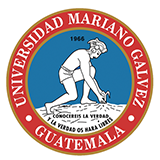
Mariano Galvez University of Guatemala
-
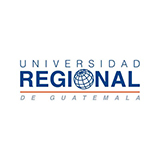
Regional University of Guatemala
-
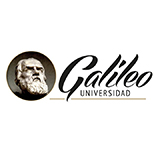
Galileo University
-
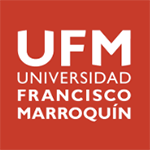
Francisco Marroquín University
-

Rafael Landívar University
-
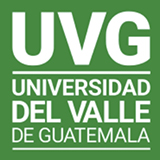
University of the Valley of Guatemala
-
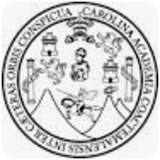
University of San Carlos of Guatemala
-

Technological Institute of Tlaxcala Plateau
-

Golfo University
-
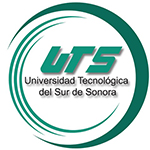
Technological University of South Sonora
-
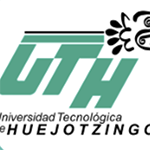
Technological University of Huejotzingo
-
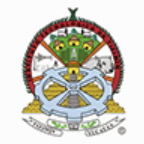
Tizimín Institute of Technology
-
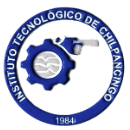
Chilpancingo Institute of Technology

